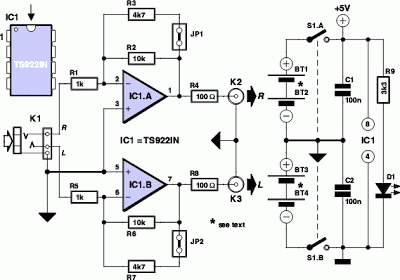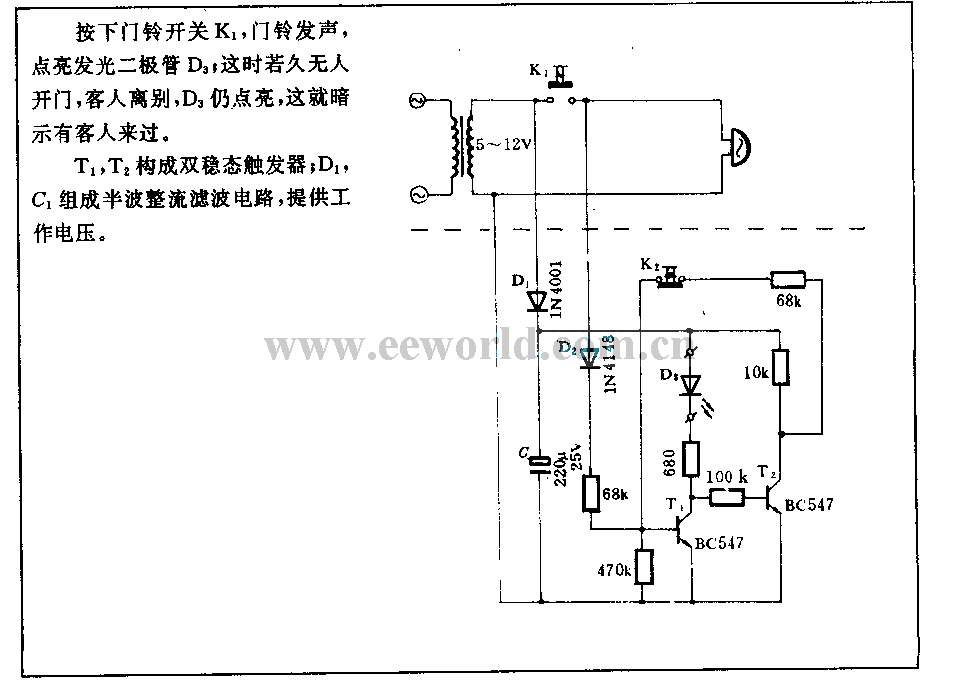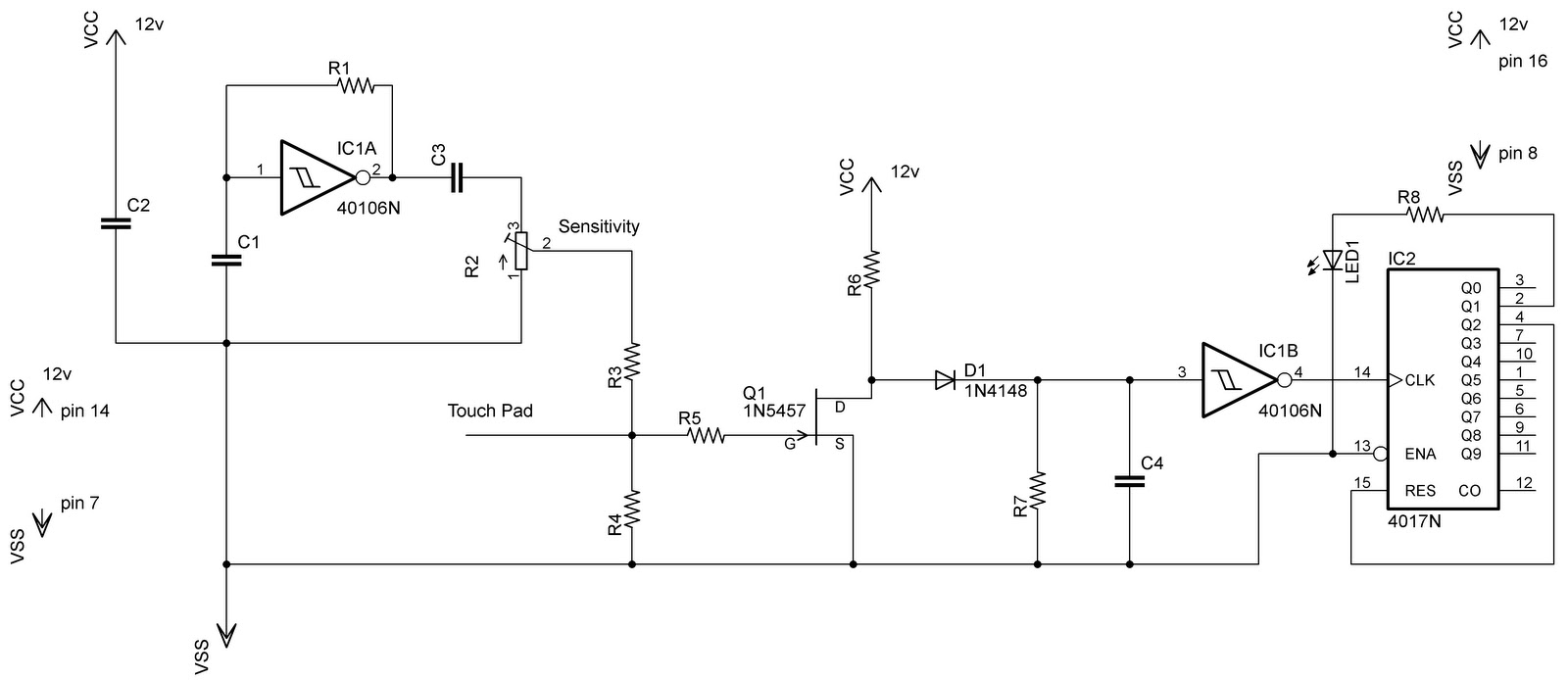
Self-Latching Light-Activated Switch Circuit

When light strikes the CDS cell, it activates the transistors, which in turn energizes the relay, causing it to latch. Pressing switch SI grounds the base of the 2N3565 transistor, thereby resetting the relay. Additionally, a 250 k potentiometer is included to adjust the circuit's sensitivity.
The circuit utilizes a Cadmium Sulfide (CDS) cell, which is a light-dependent resistor that changes its resistance based on the light intensity. When the ambient light level increases, the resistance of the CDS cell decreases, allowing current to flow through the circuit. This current activates the base of the transistors, typically configured in a Darlington pair for increased current gain, which subsequently energizes the relay coil.
The relay serves as a switching mechanism that can control higher voltage or current loads, providing isolation from the low-power control circuit. Once activated, the relay latches in its energized state, maintaining the circuit's output even when the light level decreases, until a reset condition occurs.
The reset mechanism is implemented via switch SI, which, when pressed, grounds the base of the 2N3565 transistor. This action turns off the transistor, de-energizing the relay coil and returning the relay to its default state. The reset functionality is crucial for applications where the circuit needs to be manually reset after activation.
The inclusion of a 250 k potentiometer allows for fine-tuning of the circuit's sensitivity to light. By adjusting this potentiometer, the threshold at which the CDS cell activates the transistors can be modified, enabling the circuit to respond to varying light conditions. This feature is particularly useful in applications such as automatic lighting systems, where the desired light level for activation may vary based on environmental factors.
Overall, this circuit exemplifies a simple yet effective method for controlling a relay based on ambient light levels, with user-adjustable sensitivity to accommodate different operational needs. When light strikes the CDS cell it turns on the transistors which activates the relay which latches. Depressing SI grounds the base of the 2N3565 and the relay resets. The 250 k potentiometer adjusts the sensitivity of the circuit.
The circuit utilizes a Cadmium Sulfide (CDS) cell, which is a light-dependent resistor that changes its resistance based on the light intensity. When the ambient light level increases, the resistance of the CDS cell decreases, allowing current to flow through the circuit. This current activates the base of the transistors, typically configured in a Darlington pair for increased current gain, which subsequently energizes the relay coil.
The relay serves as a switching mechanism that can control higher voltage or current loads, providing isolation from the low-power control circuit. Once activated, the relay latches in its energized state, maintaining the circuit's output even when the light level decreases, until a reset condition occurs.
The reset mechanism is implemented via switch SI, which, when pressed, grounds the base of the 2N3565 transistor. This action turns off the transistor, de-energizing the relay coil and returning the relay to its default state. The reset functionality is crucial for applications where the circuit needs to be manually reset after activation.
The inclusion of a 250 k potentiometer allows for fine-tuning of the circuit's sensitivity to light. By adjusting this potentiometer, the threshold at which the CDS cell activates the transistors can be modified, enabling the circuit to respond to varying light conditions. This feature is particularly useful in applications such as automatic lighting systems, where the desired light level for activation may vary based on environmental factors.
Overall, this circuit exemplifies a simple yet effective method for controlling a relay based on ambient light levels, with user-adjustable sensitivity to accommodate different operational needs. When light strikes the CDS cell it turns on the transistors which activates the relay which latches. Depressing SI grounds the base of the 2N3565 and the relay resets. The 250 k potentiometer adjusts the sensitivity of the circuit.





